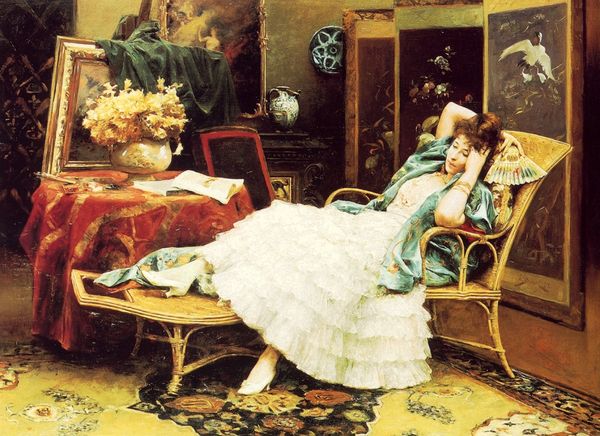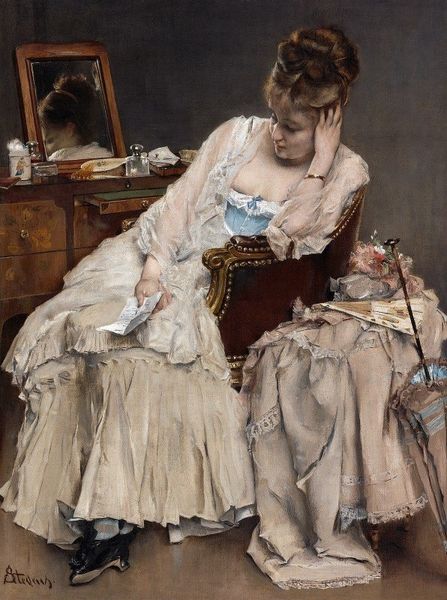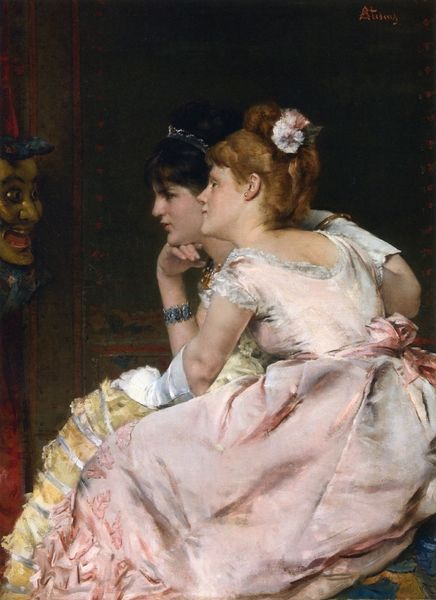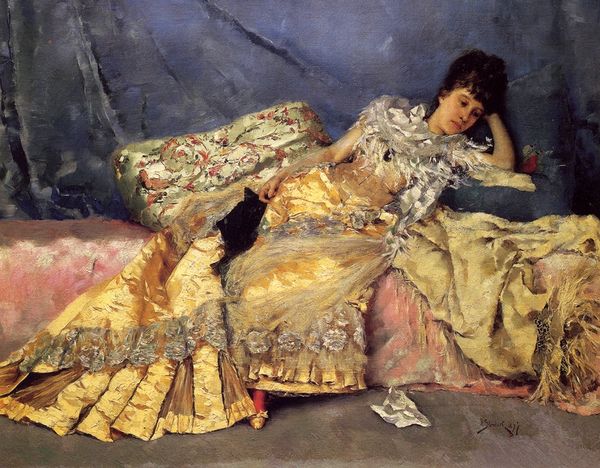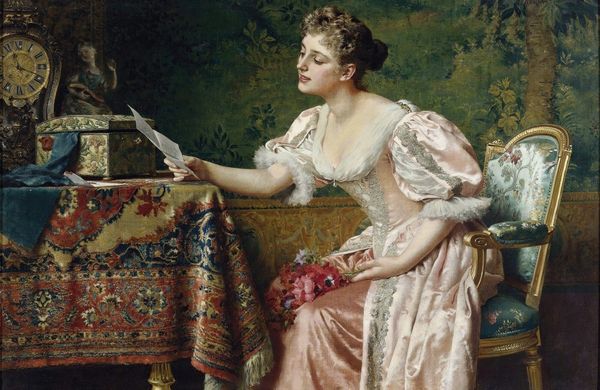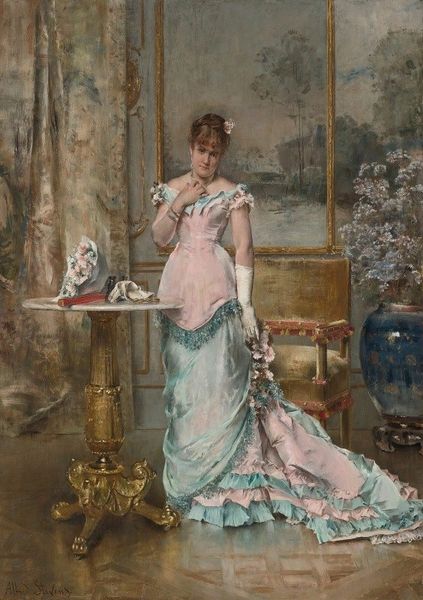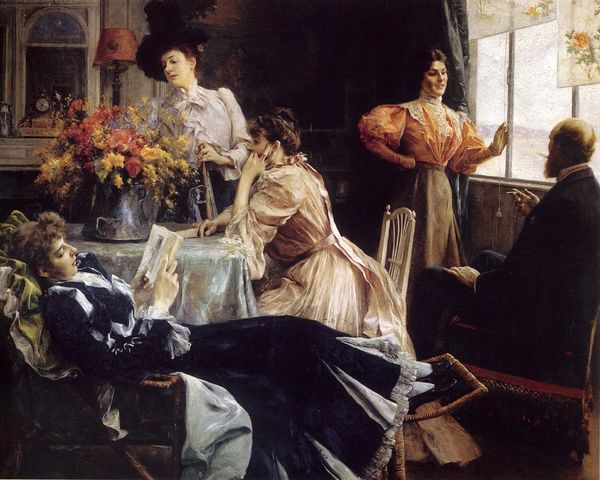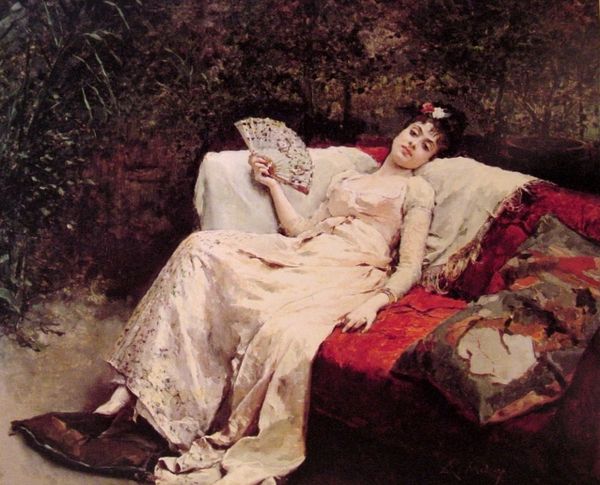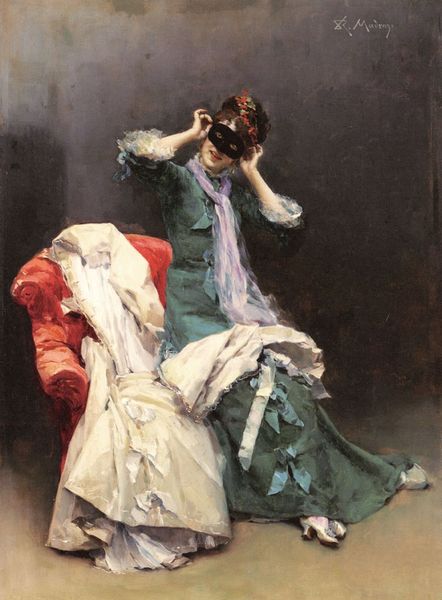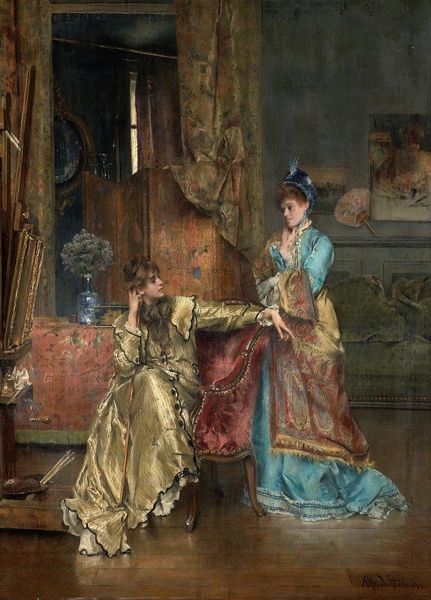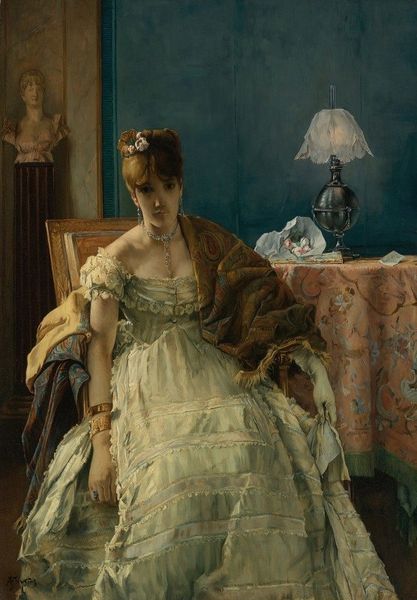
Copyright: Public domain
Curator: Ah, this room just exudes that Belle Époque languor, doesn't it? Raimundo de Madrazo’s “The Toilet,” painted around 1900. Editor: It’s beautiful. Melancholy almost. I see a world of privilege but also constraint in the details. The light seems trapped within the fabrics, like these women are prisoners in silk cages. Curator: Indeed. It’s a glimpse into a very private moment, almost voyeuristic, isn’t it? A woman arranging her hair, likely before a social event, with her maid nearby, dress in hand. It speaks volumes about class and dependency, I think. There's a stillness and solitude about it all that almost feels deliberate. What does it bring up for you? Editor: I’m thinking about how “the toilet” as a phrase softens what we’re really talking about: preparation, the constructed-ness of femininity, female beauty being meticulously manufactured. This intimacy also highlights labor. The maid is a constant, often unseen, presence ensuring the lady embodies the aesthetic ideals of the time. What about the setting strikes you most? Curator: I think it's how seemingly effortless the whole composition is—the fluid brushstrokes and the pastel palette, how the silk and lace simply glow. But as you say, it is highly constructed. Every detail meticulously arranged to create this effect. It almost feels like a stage set, the woman, the toilette, the waiting dress. Each playing its part in a prescribed scene. Editor: Exactly! It’s theatre, but also real life, right? The artifice serves a social purpose. A portrait of feminine expectation within a highly stratified society. Considering his background in both Spain and France, how might de Madrazo use art to explore the nuances of those societies, if at all? Curator: That's a good question. Perhaps he saw it as capturing a fleeting moment in a society that was itself on the verge of significant change, an artist wanting to paint, in effect, a world of leisure that may already be fading. Editor: Maybe it's both. An homage to beauty, a critique of power, a peek behind the curtain of "perfection" but also an examination of our voyeurism. It certainly lingers in the mind. Curator: I agree. It leaves us to contemplate that balance of surface and substance, doesn't it? It’s that constant dance that makes art—and life—so compelling.
Comments
No comments
Be the first to comment and join the conversation on the ultimate creative platform.
